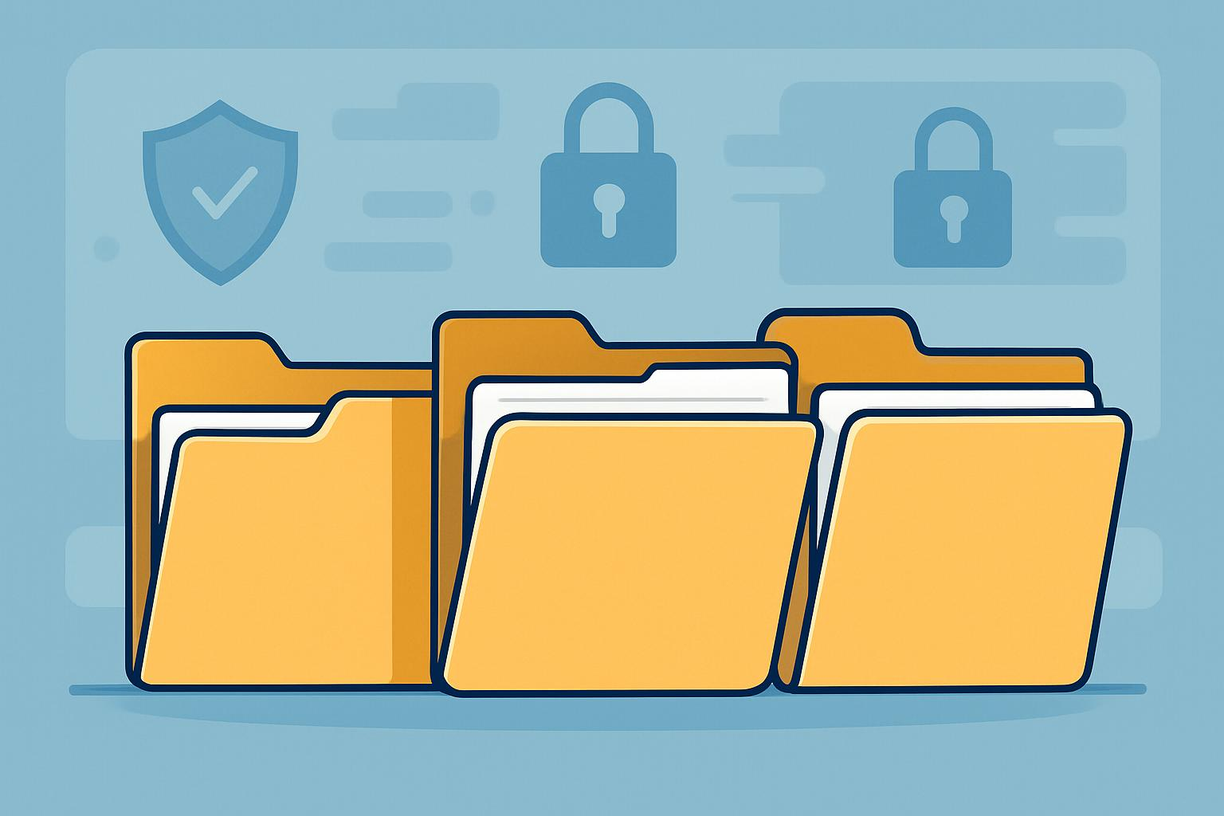Address
Arusha Njiro
Work Hours
80 Hours A week
Address
Arusha Njiro
Work Hours
80 Hours A week

(Image: Hero image representing organized and secure business file management)
“Where is that file?” “Who deleted the latest version?” “Can everyone access this confidential folder?” If these questions sound familiar, you’re not alone. Many small and medium businesses across Tanzania face daily frustrations managing shared business files. Files scattered on USB drives, lost in email threads, or sitting in poorly configured network shares lead to confusion, lost productivity, and security risks.
Basic file sharing methods like USB drives, email attachments, or simple folder shares without proper control might seem convenient initially, but they come with hidden dangers—security vulnerabilities, version control nightmares, and inefficient workflows that grow worse as your business expands.
The solution? A professionally structured, secure folder sharing setup on a Windows Server provides a centralized, reliable, and efficient way to manage your critical business data. This approach not only streamlines access and collaboration but also safeguards sensitive information with fine-grained permissions and integrates seamlessly with backup strategies.
Israel Ngowi specializes in expert Windows Server setup and reliable folder sharing solutions tailored for Tanzanian businesses. This article explores why structured folder sharing matters, common pitfalls to avoid, best practices for security and organization, and how professional services ensure your business files are managed reliably and securely in Tanzania.
For Tanzanian SMBs, local network access to files mitigates unreliable internet issues and reduces downtime. Secure, centralized file storage supports growing teams needing dependable access and control, making folder sharing more than a convenience—it becomes a productivity and security lifeline.
Keywords: business file management Tanzania, secure data sharing smb, centralized file storage Tanzania
Internal Link: For setup basics, see Expert Windows Server Setup.
Granting all users full access invites accidental deletions and exposes sensitive files. Instead, apply the principle of least privilege by creating specific groups with tailored access.
Relying only on share permissions is insufficient. NTFS permissions govern actual file-level access and provide granular security. Combining NTFS with share permissions (following AGDLP best practices) is crucial for tight control.
Messy folder structures make finding files difficult, increasing lost time and errors. Plan a logical, hierarchical folder structure (by department, project, or function) to maintain clarity and scalability.
Files named “Report_final_final_v2.docx” cause confusion. Establish consistent naming rules for dates, versions, and descriptions to keep files identifiable.
Configuring shares for local network only limits your team in today’s flexible working environments. Plan for secure remote access options like VPN or Remote Desktop to enable access beyond the office.
Assuming shared folders are safe is dangerous. Integrate sharing with robust backup strategies to protect against data loss from hardware failure, accidental deletion, or ransomware.
Research Note: AGDLP (Accounts, Global groups, Domain local groups, Permissions) best practices are proven to simplify permission management.
Keywords: folder permission mistakes, secure network share setup, windows server best practices sharing
Image Idea: Do/Don’t visual comparing chaotic vs. well-structured folder permissions.
Think strategically before creating folders and setting permissions. Understand your business workflows and data sensitivity levels.
Keep it intuitive and allow room for growth.
Set up a ‘Finance’ folder with Modify rights assigned only to the ‘FinanceTeam’ group. Create a ‘Public’ folder readable by ‘Authenticated Users’ so all staff can view general info.
Keywords: folder structure best practices, ntfs permissions setup guide, active directory group strategy
I specialize in helping Tanzanian businesses implement these best practices tailored to your unique workflows.
Focused on reliability, security, and ease of management, my services are crafted for the realities of Tanzanian SMBs.
Keywords: file management consultant Tanzania, reliable folder sharing setup, info@iziraa.com IT services
Q: How difficult is it to change permissions later?
A: With AGDLP group nesting, permission changes happen simply by adding/removing users from groups — no need to alter folder settings repeatedly.
Q: Can I access these shared folders from my phone or tablet?
A: Yes, with secure remote access (VPN or Remote Desktop), mobile devices can connect safely, although user experience varies with connection speed.
Q: What if the server goes down?
A: A solid backup and disaster recovery plan ensures quick restoration minimizing downtime and data loss.
Move from chaotic file sharing to structured, secure, and reliable file management on a Windows Server. Enjoy improved efficiency, stronger data security, and peace of mind knowing your business data is protected and well organized.
Stop chasing files and worrying about security. Contact Israel Ngowi today for expert folder sharing setup tailored to Tanzanian businesses.
Israel Ngowi | Email: info@iziraa.com | Phone: 0687226493
Keywords: reliable file management Tanzania, contact info@iziraa.com, Tanzania folder sharing expert